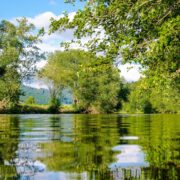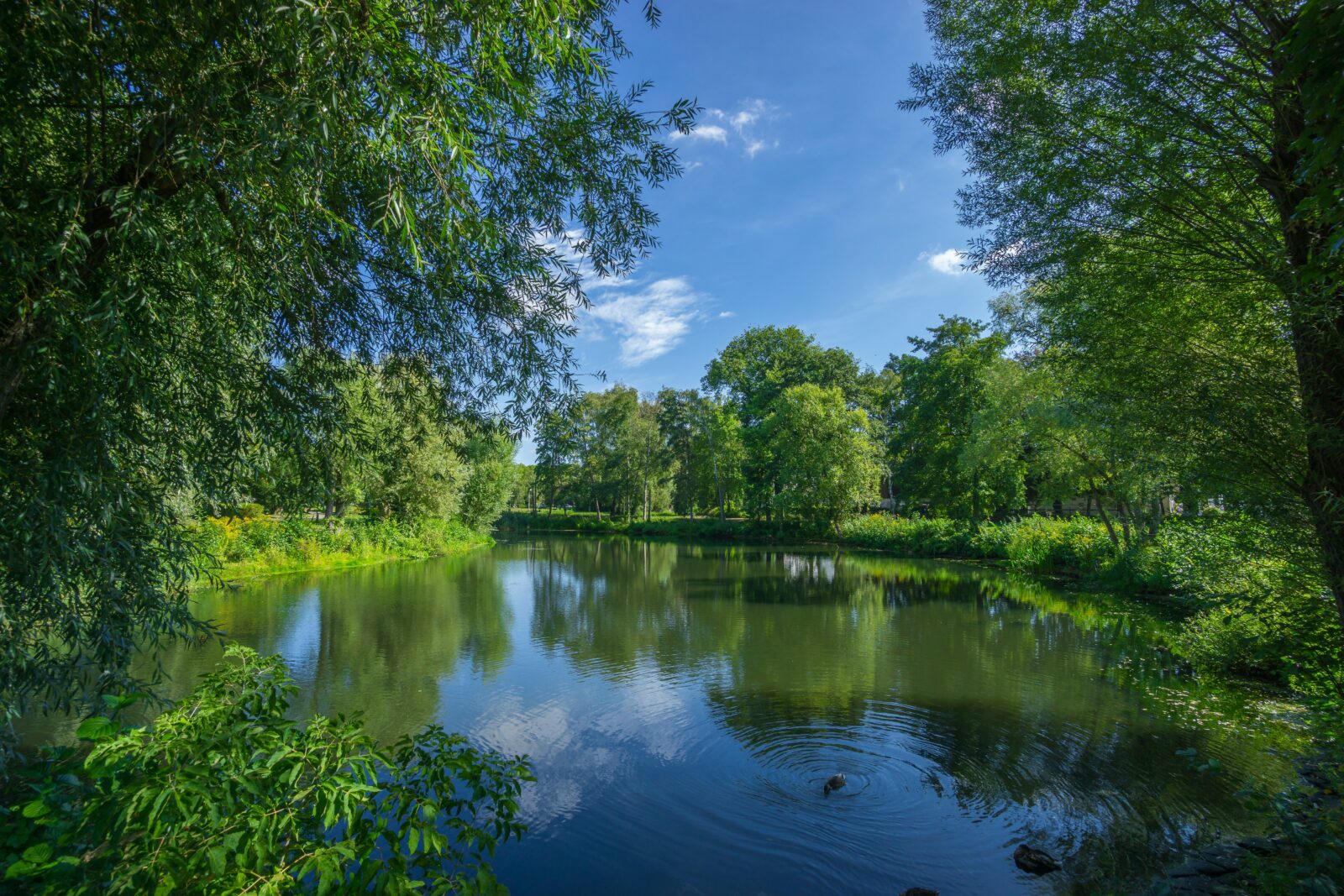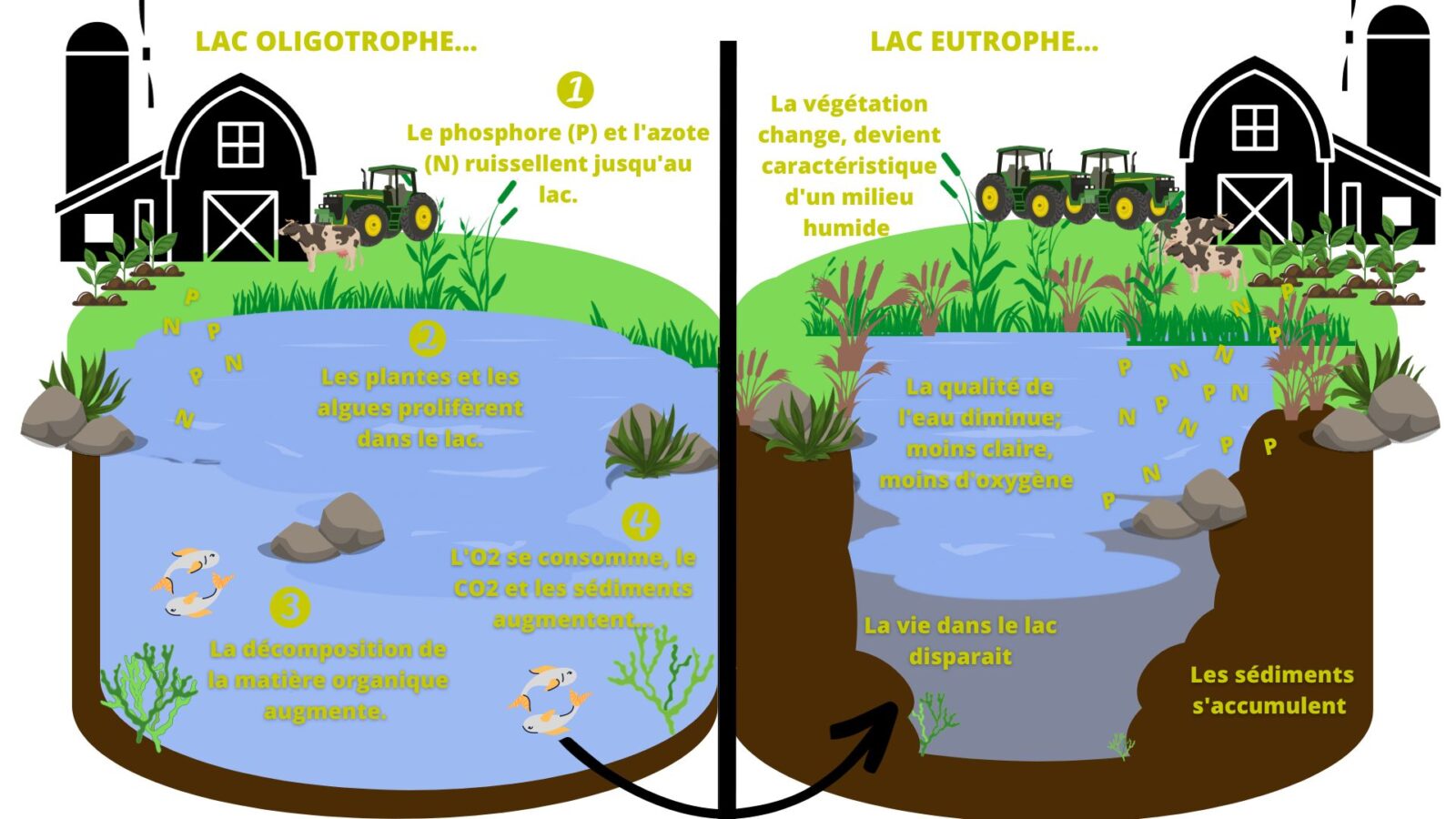ENTROPHICATION, A NATURAL PROCESS THAT SOMETIMES ACCELERATES
Eutro-what? Eutrophication. You know those blue-green algae in your lake at the cottage, maybe that’s one of the repercussions of eutrophication…
Eutrophication is a normal process in the life of a lake. Very slowly, organic matter accumulates, the lake fills in, transforming itself into a new ecosystem. It can take thousands of years or more for a lake to become eutrophic, without human impact. However, humans sometimes tend to modify natural process… [1]
What is eutrophication?
When algae, fish or other living organisms die in a lake, they sink to the bottom. Microorganisms feed on these remains, decomposing the organic matter (OM). To do this, the decomposing microorganisms consume the oxygen dissolved in the water. In return, they release nitrogen, phosphorus and CO2. These elements are then reused by other organisms. Nothing could be more normal in the life of a healthy lake! Eutrophication occurs when the biomass of plants, algae and photosynthetic microorganisms exceeds the capacity of herbivores to eat them [2].
Hundreds of years later, the lake becomes a marsh or a wetland, then a peat bog or meadow, depending on environmental conditions. It’s the accumulation of organic matter (too much of it, not broken down by decomposers) that slowly fills the lake. Layer by layer, the environment is slowly transformed!
Accelerated eutrophication
A nutrient-rich source of wastewater can run off into the watercourse. For example, when phosphorus and/or nitrogen, the main ingredients of agricultural fertilizers, are introduced by runoff into the water environment, they provide an additional supply of nutrients to lakes. You can guess, phosphorus and nitrogen not only accelerate soybean growth in the field !
The surplus nutrients also increase the proliferation of organisms, including a higher-than-normal proportion of algae and aquatic plants. This is when you can see a bloom of algae on the surface of the water. There’s an imbalance in the ecosystem and the environment can’t take it [2] [3] :
– The quantity of OM to be decomposed becomes greater than normal ;
– Decomposer microorganisms are more active ;
– Oxygen is consumed more rapidly and a lot of CO2 is released ;
– There’s not enough oxygen and many animals die ;
– As a result, there is an accumulation of organisms that are not decomposed at the bottom of the lake ;
– The result is an accumulation of sediments that affects water quality ;
– The lake deteriorates rapidly.
The eutrophied lake offers a poorer quality living environment. Biodiversity is affected, with only a few species able to survive this drastic short-term change, jeopardizing the function of the water environment. After that, if eutrophication continues to progress, even aerobic bacteria will eventually run out of oxygen and die [2].
If you’ve understood correctly, all lakes are naturally destined to become eutrophic environments, but over thousands of years, if humans hadn’t got their paws on them!
Proper management of riparian buffer strips, spreading periods and wastewater throughout the watershed can minimize or avoid such a devastating phenomenon for lakes. Residents, cottagers, farmers, businesses, municipalities and MRCs all have a role to play in preventing eutrophication!
[1] Ministère de l’Environnement, de la Lutte contre les changements climatiques, de la Faune et des Parcs. (2023). Le réseau de surveillance volontaire des lacs. [Online]. https://www.environnement.gouv.qc.ca/eau/rsvl/methodes.htm
[2] Alloprof (n.d.) L’eutrophisation d’un plan d’eau. [Online]. https://www.alloprof.qc.ca/fr/eleves/bv/sciences/l-eutrophisation-d-un-plan-d-eau-s1345
[3] Organisme de bassin versant Abitibi Jamésie. (2021). Eutrophisation des lacs Qu’est-ce que c’est ?. [Online]. https://obvaj.org/citoyens/les-bonnes-pratiques/eutrophisation/
Written by Audrey Thériault and Samira Ladouceur





